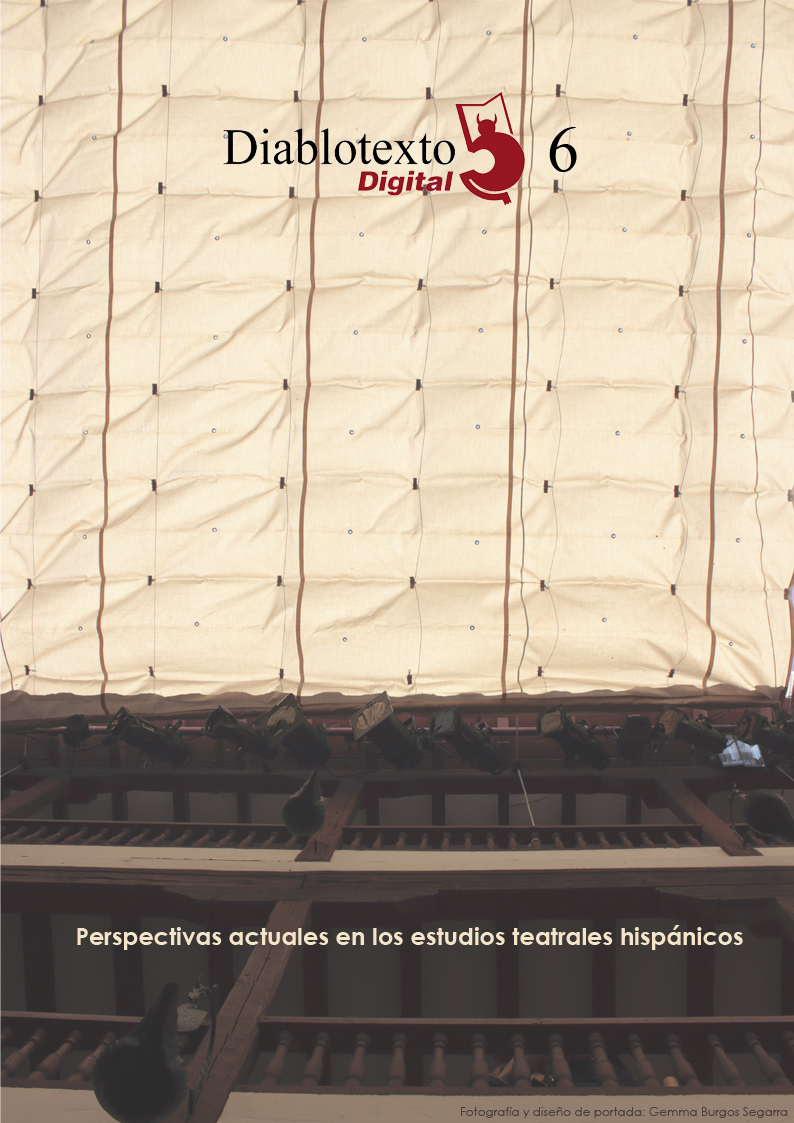Dreams for a New Spanish Dance: Dramaturgy of El desertor (1930), by Felipe Ximénez de Sandoval
DOI:
https://doi.org/10.7203/diablotexto.6.16753Keywords:
Spanish dance, ballet, dramaturgy, Ballets Espagnols Abstract
Abstract
In the literary work of Felipe Ximénez de Sandoval (1903-1978), we observe a special dedication to performing arts. Beyond his facet as playwright, he was in contact with the greatest Spanish musicians and was interested in Spanish dance. Thereby, he wrote two dramaturgies for ballet: El desertor (1930), without representation, and La rosa viva
(1966), choreographed by Mariemma. Although this last ballet’s location is unknown, El desertor was found in the archives of Antonia Mercé la Argentina. He created it for her with Gustavo Pitalluga’s music. This article studies the connection between the author and the Spanish dance and analyses the dramaturgy of this ballet.
 Downloads
Downloads
 References
References
Acker, Yolanda (1998). “Ballets escritos por compositores españoles en el siglo XX”. En Antonio Álvarez Cañibano, José Ignacio Cano y María José González Ribot (eds.), Ritmo para el espacio. Los compositores españoles y el ballet en el siglo XX.Madrid: Centro de Documentación de la Música y de la Danza, 42-67 pp.
Albert, Mechthild (2007). “Esteticismo neoclásico y vitalismo prefascista. Felipe Ximénez de Sandoval: Robinsón”. En Gero Arnscheidit y Pere Joan Tous (coords.), Una de las dos Españas: representaciones de un conflicto identitario en la historia y en las literaturas hispánicas: estudios reunidos en homenaje a Manfred Tietz. Madrid/Frankfurt: Vervuert/Iberoamericana, 403-422 pp.
Albert, Mechthild (2003). Vanguardistas de camisa azul. La trayectoria de los escritores Tomás Borrás, Felipe Ximénez de Sandoval, Samuel Ros y Antonio de Obregón entre 1925 y 1940. Traducción de Cristina Díez Pampliega y Juan Ramón García Ober. Madrid: Visor.
Bethencourt Pérez, Fátima (2016). La escena moderna como crisol de la vanguardia: su reflejo en el ballet La romería de los cornudos y el espectáculo La Tragedia de Doña Ajada (1929) [tesis]. Madrid: Universidad Complutense de Madrid.
Carbajosa, Mónica, y Carbajosa, Pablo (2003). La corte literaria de José Antonio: la primera generación cultural de la Falange. Barcelona: Crítica.
Hellín Rubio, Inés (2106). La Danza Española y la narrativa escénica. Madrid: Publicaciones de la Asociación de Directores de Escena de España, col. Teoría y práctica del Teatro.
Murga Castro, Idoia (2017). Escenografía de la danza en la Edad de Plata (1916-1936). Madrid: Consejo Superior de Investigaciones Científicas.
Downloads
Published
How to Cite
-
Abstract459
-
PDF (Español)301
Issue
Section
License
Licencia de reconocimiento de Creative Commons “Reconocimiento - No Comercia l- Sin Obra Derivada
Authors who publish with this journal agree to the following items:
The authors will keep their copyright and guarantee the journal the right of first publication of their work, which will be simultaneously subject to the Creative Commons license that allows third parties to share the work indicating its author and its first publication in the journal. The authors may adopt other non-exclusive license agreements to distribute the version of the published work (e.g., depositing it in an institutional telematic file or publishing it in a monographic volume), with an acknowledgment of its initial publication in this journal. The authors are allowed and encouraged to disseminate their work through the Internet (e.g., in institutional telematic archives or on their website) before and during the submission process, which can produce interesting exchanges and increase citations of the published work. (See Effect of Open Access)




